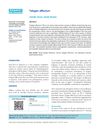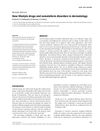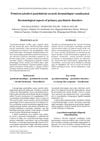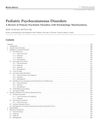Somatization in Dermatology Patients: Sociocultural Perspectives
January 2017
in “
Clinics in Dermatology
”

TLDR Skin symptoms without a medical cause often reflect psychological stress and are influenced by culture, requiring a team approach for treatment.
The document from May 1, 2017, examines somatization in dermatology patients, where individuals present with medically unexplained symptoms such as itching, burning, and numbness that may be expressions of psychological distress. It suggests that these symptoms can be culturally influenced ways of communicating distress, particularly in non-Western cultures. The paper notes that somatization is more common in middle-aged women and certain demographics in India, and it is associated with various psychodermatological conditions like psychogenic purpura, somatoform autonomic dysfunction, hypochondriasis, and body dysmorphic disorder (BDD). BDD alone is seen in 11-15% of dermatology clinic patients and up to 23% in cosmetic clinics. The document also discusses conditions like dermatitis artefacta and trichotillomania, which are influenced by cultural beliefs and may coexist with other psychiatric conditions. It highlights the prevalence of somatoform symptoms in patients with conditions like Multiple Chemical Sensitivity (up to 35%) and sick building syndrome. The document concludes that while somatization is common in dermatology, pure disorders without other psychiatric comorbidities are rare, and a multidisciplinary approach is needed for management, including the potential use of a separate scale for cutaneous somatic symptoms and increased education on psychocutaneous conditions.





